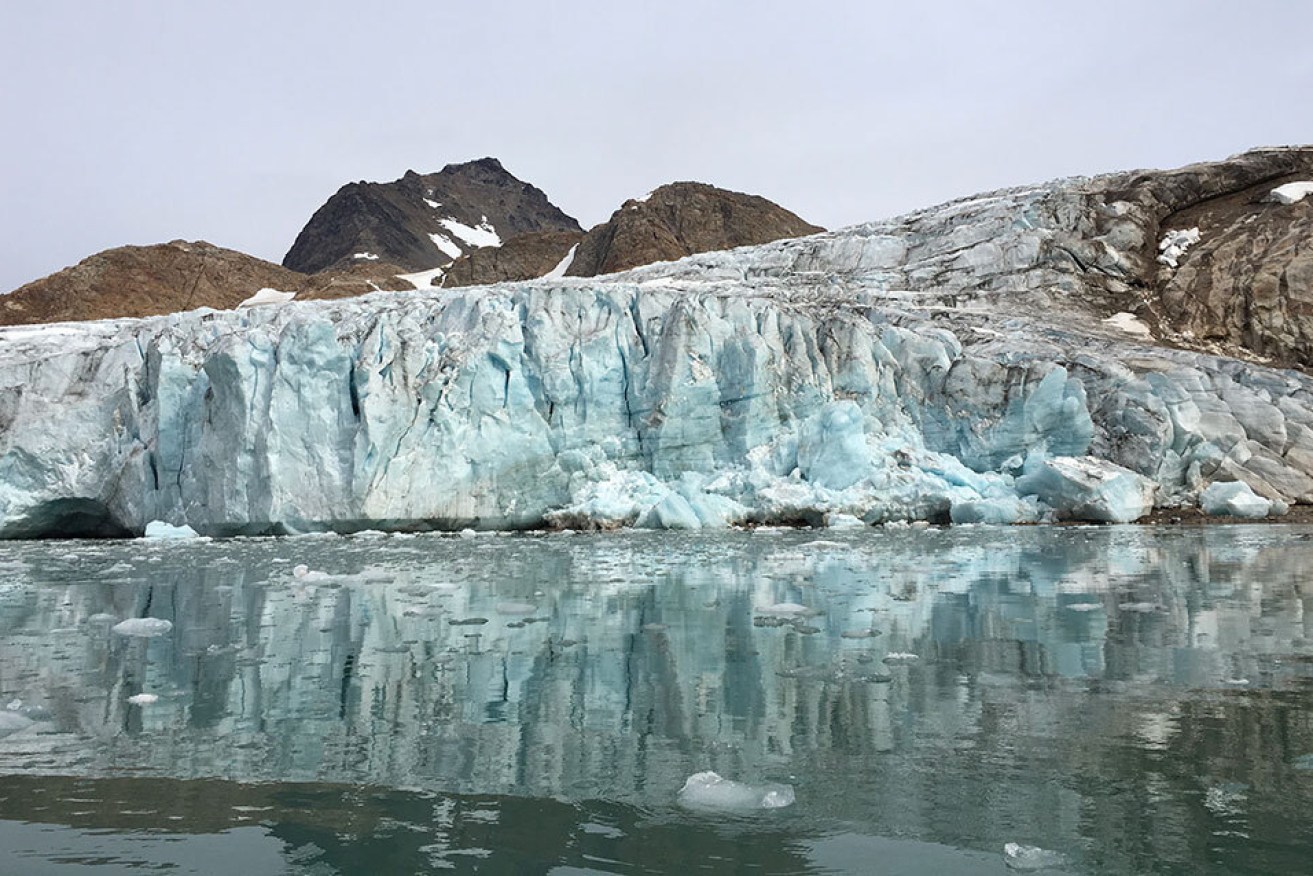‘Zombie ice’ sea level rise warning
Greenland’s rapidly melting ice sheet will eventually raise global sea level by at least 10.6 inches (27 centimetres), more than twice as much as previously forecast, a study has found.

A melting glacier in Greenland. Photo: NASA/JPL-Caltech/Cover Images
That’s because of something that could be called zombie ice – doomed ice that, while still attached to thicker areas of ice, is no longer getting replenished by parent glaciers now receiving less snow.
Without replenishment, that ice is melting from climate change and will inevitably raise seas, says study co-author William Colgan, a glaciologist at the Geological Survey of Denmark and Greenland.
“It’s dead ice. It’s just going to melt and disappear from the ice sheet,” Colgan said in an interview.
“This ice has been consigned to the ocean, regardless of what climate (emissions) scenario we take now.”
Study lead author Jason Box, a glaciologist at the Greenland survey, said it was “more like one foot in the grave”.
The unavoidable 10 inches in the study is more than twice as much sea level rise as scientists had previously expected from the melting of Greenland’s ice sheet.
The study, publish on Monday in the journal Nature Climate Change, said it could reach as much as 30 inches (78 centimetres).
By contrast, last year’s Intergovernmental Panel on Climate Change report projected a range of two to five inches (six to 13 centimetres) for likely sea level rise from Greenland ice melt by the year 2100.
What scientists did for the study was look at the ice in balance. In perfect equilibrium, snowfall in the mountains in Greenland flows down and recharges and thickens the sides of glaciers, balancing out what’s melting on the edges.
But in the past few decades there’s less replenishment and more melting, creating imbalance.
Study authors looked at the ratio of what’s being added to what’s being lost and calculated that 3.3 per cent of Greenland’s total ice volume will melt no matter what happens with the world cutting carbon pollution, Colgan said.
“I think starving would be a good phrase” for what was happening to the ice, Colgan said.
One of the study authors said more than 120 trillion tons (110 trillion metric tons) of ice was already doomed to melt from the warming ice sheet’s inability to replenish its edges.
The figures are a global average for sea level rise, but some places further away from Greenland would get more and places closer would get less.
This is the first time scientists calculated a minimum ice loss – and accompanying sea level rise – for Greenland, one of Earth’s two massive ice sheets that are slowly shrinking because of climate change from burning coal, oil and natural gas.
Scientists used an accepted technique for calculating minimum committed ice loss, the one used on mountain glaciers for the entire giant frozen island.
-AAP




